There are not too many audiophile brands out there today that have the history that Rotel does. As a company, they are in their 64th year as a family-owned and operated business that makes some of the most well-known, affordable audiophile products on the market. Earlier in 2025, Rotel launched their new DX line of audiophile components with a headphone amplifier, the Rotel DX-3. The Rotel DX-5 (buy at Crutchfield) is an integrated amplifier in the same line of audiophile products. Both items in this line look very similar, with small form factors, the power switch on the front alongside a small LED screen, and a volume knob. Inside of the Rotel DX-5’s 8.5-by-three-by-10-inch case, you will find an ESS ES9039Q2M DAC chipset, a USB-B input that supports 32-bit/384 kHz PCM, DSD, coaxial and optical inputs that support 24-bit/192 kHz, Bluetooth support for the aptX HD and AAC protocols, one RCA input, HDMI ARC connectivity, and a dedicated subwoofer output.
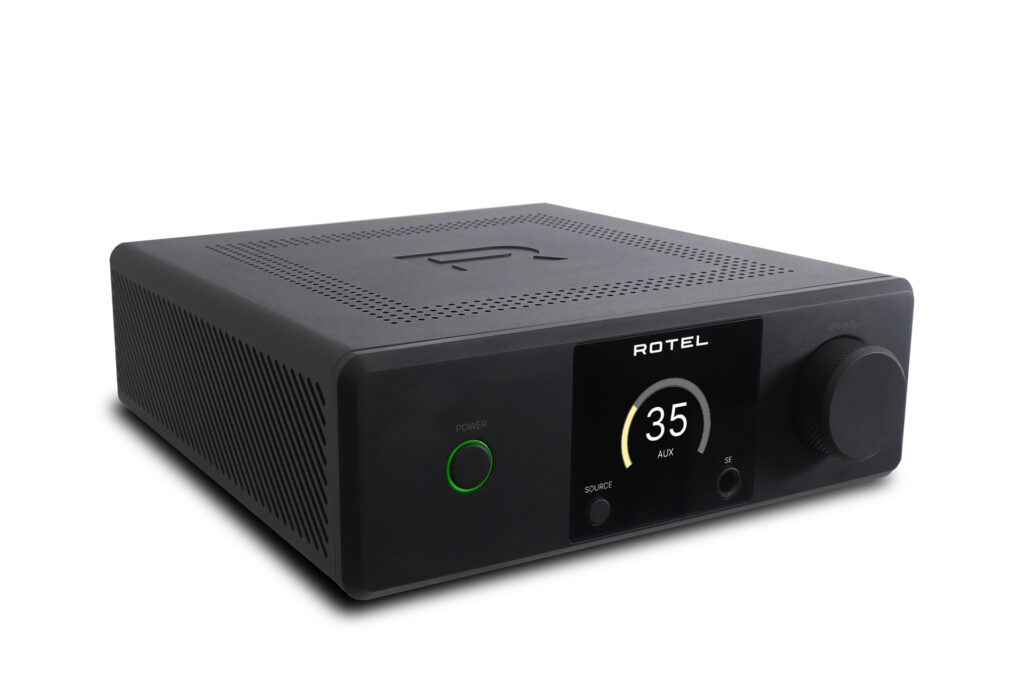
What Makes the Rotel DX-5 Integrated Amplifier So Special?
- The Rotel DX-5’s smaller form factor makes it ideal for smaller spaces and tight installations. Not everybody has a dedicated equipment rack for their audiophile gear, so being able to have an integrated amplifier that is so small can be a nice luxury if you’re looking for a great sound but you don’t have the physical space for something larger.
- HDMI is always a plus. In 2025, having an HDMI input on an integrated amplifier should be standard for new audiophile components. While there are many audiophiles who like to keep their television separate from their music, there are more and more who expect to be able to connect the two investments together, and HDMI is the ideal path for that.
- I love seeing a dedicated subwoofer output. Subwoofers can be one of the best elements to add to get the most out of your music playback system for the least amount of money, so having a dedicated output is great to have. I would argue that it would be a negative for the Rotel DX-5 not to have it, as there are no RCA outputs.
- Being able to program the inputs on the Rotel DX-5 is a nice touch. This is a small detail, but one that can make things much easier, and that is worthy of note. You are able to disable the inputs that you don’t wish to use and give names to the ones you do. So, if you would prefer to call your HDMI “TV,” so that the other people in your house aren’t always asking how to get sound on the TV, you can do that. If you want to change the name of your coaxial input to “streamer,” so it’s clear that’s what it is for, you can do that, too.
Why Should You Care About the Rotel DX-5 Integrated Amplifier?
Often, integrated amplifiers come as big rectangular boxes. This is usually because you need to fit the amplifier in and have enough room to also add in all the inputs that a consumer might desire. If you’re looking for a minimalist approach, then the Rotel DX-5 integrated amplifier might be of interest to you. The compact size without compromising sonics might just what you need. The approach taken by Rotel’s design team is a great fit for people looking to save space instead of consuming it.
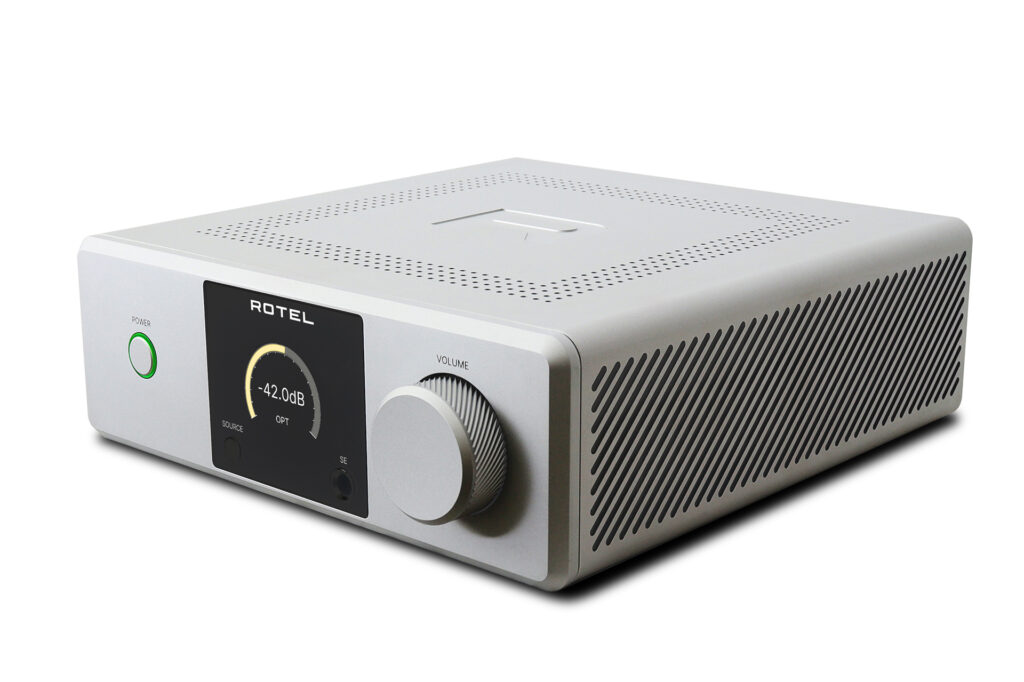
Some Things You Might Not Like About the Rotel DX-5 Integrated Amplifier
• Some won’t feel that 33 watts is enough power. In my experience, 33 watts can go a long way, especially if your loudspeakers are somewhere around 90 dB efficient. With that said, people want headroom for a reason, and they will look at 30 watts of power per channel and simply keep going, as they won’t see it as enough power for their needs.
• Integrated streaming would be nice to have at this price. With there being so few inputs, saving one by having Qobuz Connect, Tidal Connect, and Spotify Connect would have been a good touch and one I would have preferred over Bluetooth connectivity.
• Rotel sets the volume to unity gain if it determines the device has volume control. In theory, this makes some sense, but in my testing, it wasn’t overly practical. My phonostage allows me to adjust the gain, but it isn’t intended to be a true volume control. I would have preferred to use the integrated amplifier to fine-tune the volume instead of having to adjust it with the four 10 dB increments from my phono stage. This only affects the analog inputs. The volume control on the Bluesound Node wasn’t fixed, however.
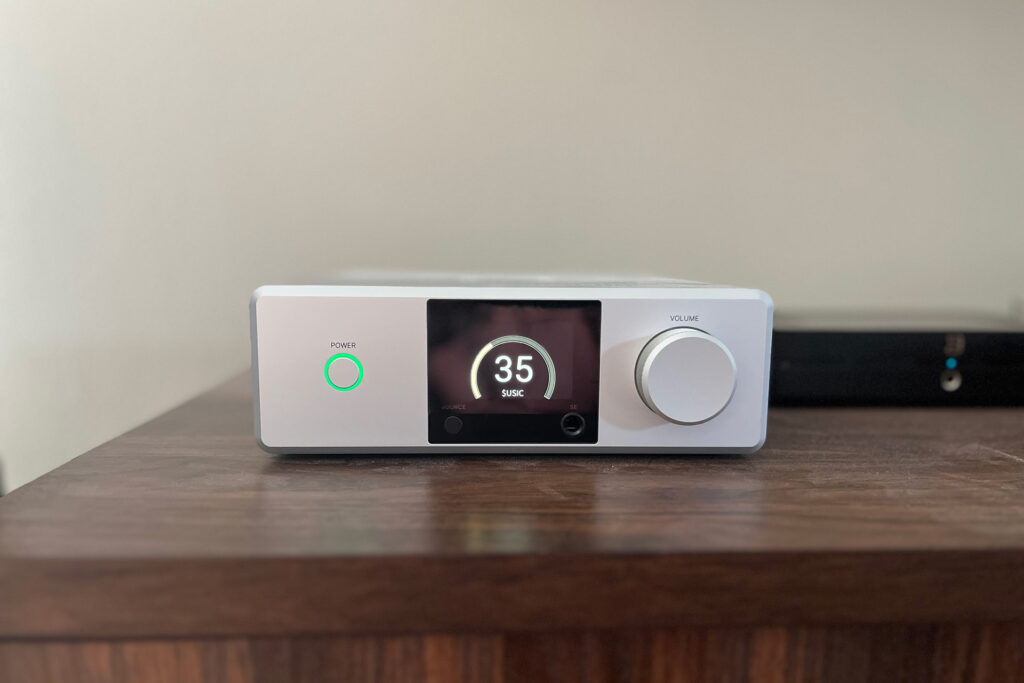
Listening to the Rotel DX-5 Integrated Amplifier …
I tested the Rotel DX-5 with Paradigm Founder 80F speakers, along with a Bluesound Node (2024)streamer and a Pro-Ject X1 turntable and a
Schiit Skoll F phonostage (read my reviews). The Bluesound Node was connected with a coax cable to use the ESS ES9039Q2M DAC chipset in the Rotel, and the phonostage was connected using the RCA input.
When testing integrated amplifiers, one of the tracks I enjoy playing is “Mess Around” (Qobuz 192 kHz) from Dr. John. Dr. John’s blend of jazz, soul and R&B can give any system a sonic workout. This track is a Ray Charles cover and is found on Dr. John’s 1972 release titled Dr. John’s Gumbo, which features 12 tracks that are all covers of New Orleans standards. Listening to this track with the Rotel DX-5, it sounded very lively. You could easily separate the instruments, including the bass guitar, but I wouldn’t say the bass came through as being particularly deep. This is a complicated track, and the Rotel DX-5 resolved the complexities nicely. Is there room for improvement? Yes, as I tried experimenting with some low-cost audiophile DACs, and they provided a small, incremental upgrade. That’s not a knock on the Rotel as much as a roadmap to future reasonably-priced possible upgrades for the aspirational audiophile looking to keep moving up in the audiophile performance world.
Another track that is great for testing out speakers is The Who’s “Overture” from their album Live at Leeds (Qobuz 96 kHz), which is creatively important but not known as an audiophile standard demo. When the label released the deluxe edition of this live album for its 25th anniversary in 1995, they added a second Compact Disc that contained the performance of the band’s album Tommy. “Overture,” as you might expect, is the first track on the disc that contains the live version of Tommy. The Who were famous for their live performances at this time, which had a much heavier and more energetic sound than what they were able to get in the studio. The sound of Keith Moon’s drums really stood out to me while listening through the Rotel DX-5. The cymbals especially sounded very clear, with good resolution on the massive amount of musical information that comes from this specific musical test. You could easily tell the difference in energy between Moon crashing the cymbal and contacting with it more lightly. Similarly, it was easy to pick up the difference between Moon playing the cymbal versus Roger Daltrey playing the tambourine. Being able to hear this level of detail from a low- to mid-priced integrated amp speaks directly to what an audiophile is looking for in their journey as they build their system from entry-level gear to really expensive stuff. Rotel delivers on the expensive experience without the expensive price tag.
The last track I tested the Rotel DX-5 with was “Any Major Dude Will Tell You” by Steely Dan (Qobuz 196 kHz). This song comes from the band’s 1974 release Pretzel Logic. Steely Dan are famous for their smooth, Yacht Rock sound and, while this track isn’t likely the first one that people think of when they think of the band or the subgenre, I think the sound of this track fits the bill perfectly. The acoustic guitar sound in the opening was both smooth and realistic, while the electric piano track that comes in shortly after sounded equally smooth and clean. The different instruments throughout the rest of the track were easy to separate from each other, and you can also place the location of each instrument in the recording.
Will the Rotel DX-5 Integrated Amplifier Hold Its Value?
There are some factors here that can play in favor of the Rotel DX-5 integrated amplifier in the used market, the biggest ones being the HDMI input and its relatively uniqueness in its diminutive size. However, it wouldn’t be a surprise if two things that currently work in its favor start to become more normalized. Class-D amplifiers are more present in the market, which allows for smaller devices, and we see more integrated amplifiers having HDMI inputs. I expect, in the short term, the resell value will be solid, but there is an avenue where a few years down the road it is much less favorable.
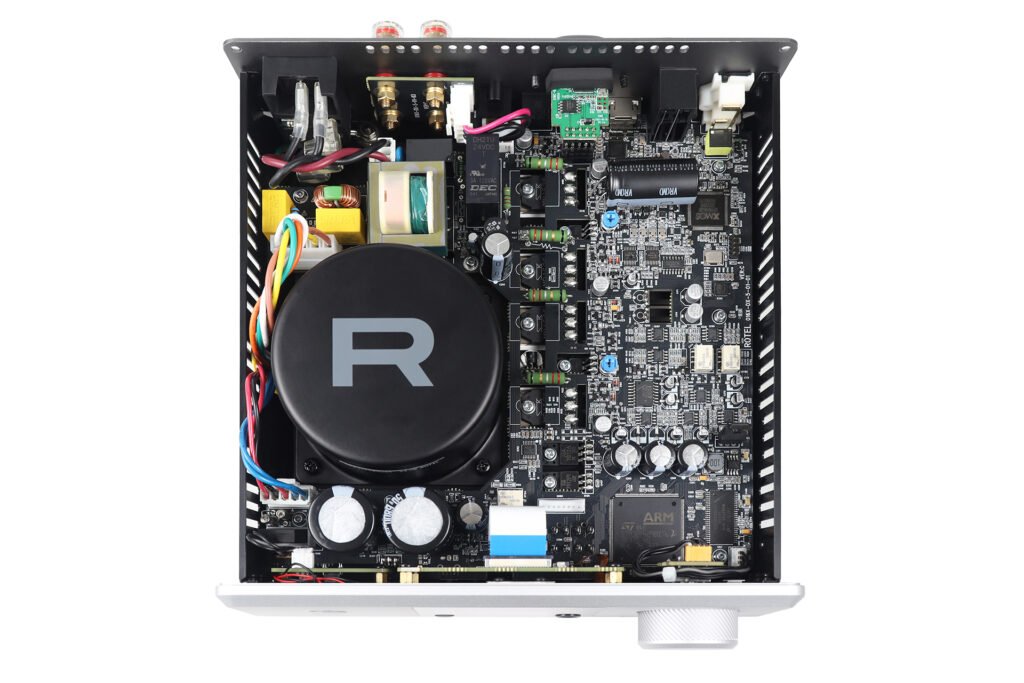
What is the Competition for Rotel DX-5 Integrated Amplifier?
The NAD C 3050 ($1,700 – read my review) This integrated amplifier in my eyes continues to be the standard for integrated amplifiers under $2,000. You get 100 watts per channel into both four and eight ohms, a DAC, Bluetooth, HDMI input and a phonostage. If that isn’t enough, you can add the BluOS module to it, and now you have streaming built-in and room correction. With that said, you can fit two or three Rotel DX-5s into the case that holds everything the NAD C 3050 (buy at Crutchfield) has.
You may also consider the Marantz Model 60n ($1,600 – buy at Crutchfield). From a price point, it is a little less than the Rotel DX-5. It produces 60 watts of power into eight ohms and 80 watts into four. It has HDMI input, a phonostage, built-in streaming through HEOS, and Apple AirPlay 2, as well as being a certified Roon player. Marantz has lots to offer in this unit at this price point.
Lastly, the LEAK Stereo 230 ($1,995) admittedly comes at a slightly higher cost, but it also boasts 230 watts per channel and includes a phonostage, two RCA inputs and a pre-out, as well as USB input, two coax inputs, and both an optical and a HDMI input. Oh, and let’s not forget a 32-bit DAC as well, which decodes DSD and MQA. Some would argue the extra power is worth the extra money but, again, the LEAK is quite a bit bigger than the Rotel DX-5.
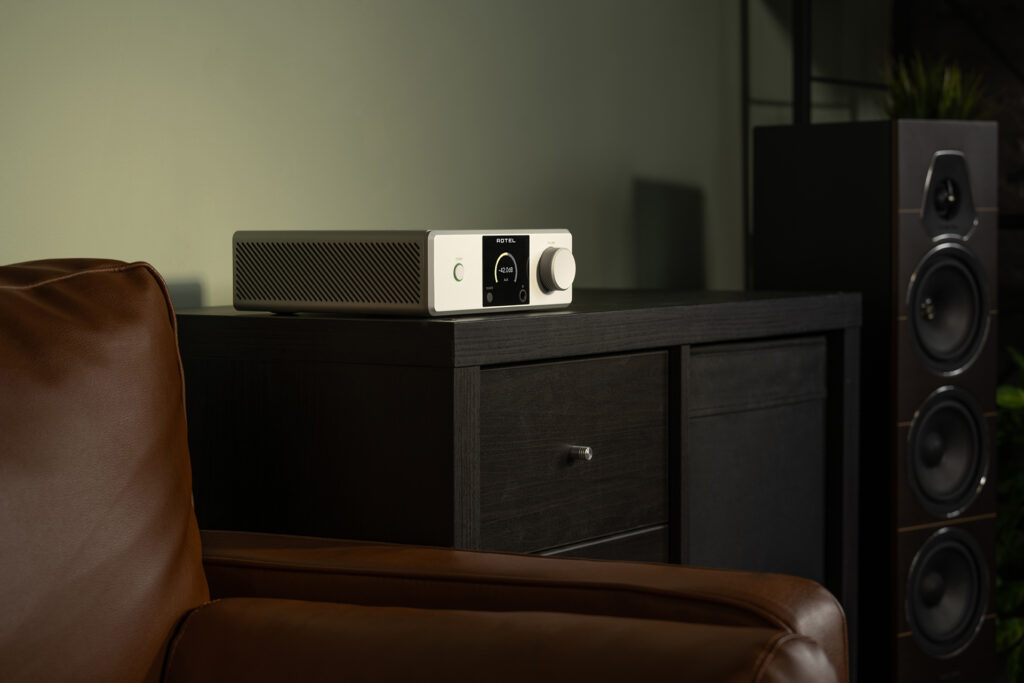
Final Thoughts on the Rotel DX-5 Integrated Amplifier …
Getting to review an integrated amplifier like the Rotel DX-5 (buy at Crutchfield) is a nice reminder that you don’t need hundreds of watts of power to enjoy your audiophile system. Not all of us dedicate time to listening to the types of music that benefit from having large amounts of headroom. With that said, I can also see the other side of that coin, where you can argue that it is really nice to have and, with a price tag that is not all that far away from $2,000, one might expect it to be there as well. At the end of the day, if you need a small integrated amplifier to fit into your lifestyle, the Rotel DX-5 is very capable and should check most buyers’ boxes. I just think if you have the money, you can buy something that will offer you more power and more inputs to play with should you ever feel like you need them.




At the risk of sounding like a shill, Peachtree Audio has a couple of integrated amps on close out sale at competitive prices. They also offer recertified and preowned models as well.